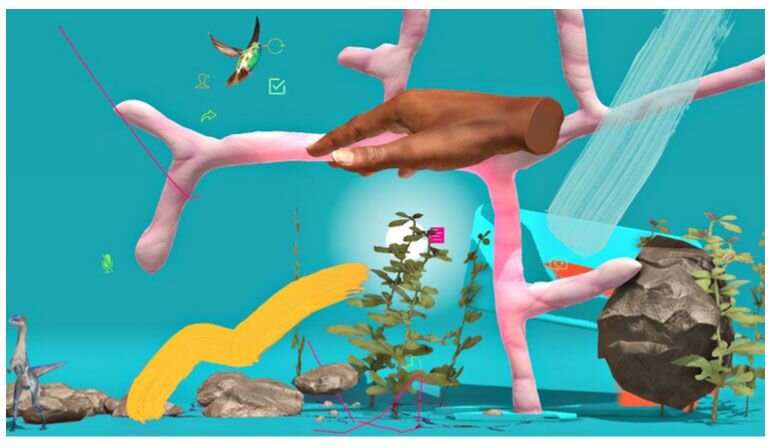Theo Triantafyllidis | a mountain made to look like a person holding a knife
November 11 – December 18, 2016
Theo Triantafyllidis | a mountain made to look like a person holding a knife
November 11 – December 18, 2016
Welcome to a mountain made to look like a person holding a knife, an exhibition of live simulation screen work, sculpture and fabric renderings by Theo Triantafyllidis. In how to everything, Triantafyllidis manually creates objects based on the computer's archiving algorithm and gives a physical presence to digital information. The live simulations are endlessly variable through continually changing augmented space.
Triantafyllidis co-opts the term ‘vanitas’ to describe art that meditates on the ephemeral character of earthly pleasures and worldly accomplishments, and brings painting to into the digital realm while highlighting the fragility of our desires in the face of mortality. The works are a playful nod to the tradition of still life paintings as self-contained narratives frozen in time, driven by the symbolism imbued to everyday objects. They are governed by the rules of intelligent artificial life and constantly reminded of their imminent destruction. Technology is a particularly apt medium through which to explore this show’s central theme, with its accelerated cycle of obsolescence, explicit manifestation of status and material success, and potential for narcissistic self-regard.
Vanitas artworks usually incorporate particular types of imagery that allude to the transience of life. Even though these systems are performing in real time, they are deprived of any kind of this human interference. Interactivity is hinted at. In order to draw out these connections, the artist has included some allegorical imagery often found in vanitas works: skulls, mirrors, oriental rugs and poppies. They are simple demonstrations of what gold can buy. Physics still apply to them. Normal physical laws are referential, but cartoon physics are preferential.
Eating is a pleasure but all these paintings cannot be eaten. What starts out as as special and intimate place to share things grows into a big, impersonal, and professional platform. Without humans it is free to flourish. It starts to simulate a parallel world where nature and artificial life coexist. Central server farms around the globe become the targets of relentless terrorist attacks. Humans hide in the shadows. Years later, disconnected from the rest of the web, some of the remaining unmanned server farms start to envision their own version of reality. Soon they realize that they miss the human touch. They provide a moral justification for painting attractive objects. Fragments of today’s internet culture are treated as archeological finds that are repurposed to fit the needs of artificial life. Youtube “how to” videos, trompa-l'œil, videogame artifacts and computer graphic demos inform this new language of painting, hopping around the uncanny valley. The result is a never-ending orgy. The process of breeding continues today. It was only over a long history of cultivation that a normal watermelon came to look less like Stanchi's and more like Brueghel's.
Theo Triantafyllidis (b. 1988, Athens, Greece) received his MFA in Design Media Arts from UCLA in 2016. He is an artist and architect that explores the fields of internet art and interactive digital environments. He received his Diploma of Architecture from the Technical University of Athens in 2012, and did an Erasmus semester in TU Berlin, before migrating to China for two years. There he founded the art collective 'doubleluckiness' as an avatar for surfing the Chinese net. His studies are funded by Onassis Foundation. His work has been screened at the Hammer Museum in Los Angeles, CA. This is his first New York solo exhibition. His work was recently acquired by the Rubell Family Collection in 2017.













